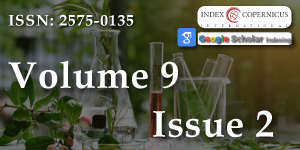The Ecology, biogeography and speciation of the butterflies of the Azores by Mark Payne
Main Article Content
Article Details
Copyright (c) 2025 Russell PJC.

This work is licensed under a Creative Commons Attribution 4.0 International License.
1. Palem H, Kanike S, Poroshottam VRS. Eco Biology and Life Cycle of the Pea Blue Butterfly, Lampides boeticus (Linnaeus) from Southern Andhra Pradesh, India. South Asian J Life Sci. 2015;3(1):14–21. Available from: http://dx.doi.org/10.14737/journal.sajls/2015/3.1.14.21
2. Linnaeus C. System of Nature Through the Three Kingdoms of Nature, According to Classes, Orders, Genera, Species. Stockholm: Laurentius Salvius; 1758;1:824. Available from: https://www.biodiversitylibrary.org/bibliography/542
3. Linnaeus C. Museum of Her Royal Majesty Lovisa Ulrika, Queen of the Swedes, Goths, and Vandals… in which rarer, exotic animals, especially Insects & Shells are described & determined. Published as a Prodromus. Stockholm: L. Salvius; 1764;[viii] + 720 + [2]. Available from: https://www.biodiversitylibrary.org/bibliography/119811
4. Howard LO. The Migration of Butterflies. By C. B. Williams. Biological Monographs and Manuals, No. IX; Edinburgh and London: Oliver and Boyd, 1930;xi+473. Science. 1931;73(1883):129. Available from: https://doi.org/10.1126/science.73.1883.129.a
5. Bernardi G. Biogeography and speciation of Rhopalocera (butterflies) of the Mediterranean islands. In: The settlement of the Mediterranean islands and the problem of insularity. CNRS International Colloquia. 1961;94(1959):181–215. Available from: https://oreina.org/artemisiae/biblio/index.php?module=biblio&action=biblio&id=18771
6. Russell PJC. New records of Vanessa cardui (L.) and V. virginiensis (Drury) (Lep.: Nymphalidae) from the island of Corvo. Entomol Rec J Var. 2003;115:290–1. Available from: https://www.biodiversitylibrary.org/part/194881
7. Vieira V. Vanessa virginiensis (Drury, 1773) in the Azores Islands. SHILAP Rev Lepidopterol. 2017;45:75–81. Available from: https://shilap.org/revista/article/view/973/2958
8. Geoffroy EF. Species no. 48. In: Fourcroy AF de, editor. The Entomology of Paris, Part Two. Paris; 1785;250. Available from: https://www.biodiversitylibrary.org/item/82453#page/5/mode/1up
9. Drury D. Illustration of Exotic Entomology, Figures and Descriptions of Foreign Insects. London, UK: Henry G. Bohn, Covent Garden; 1837; 94. Available from: https://www.biodiversitylibrary.org/bibliography/12137
10. Bang-Haas A. New or little-known Palearctic Macrolepidoptera. IV. German Entomological Journal, Iris. 1912;26:103-110.
11. Russell PJC, Tennent WJ, Hall D. Polymorphism in Colias croceus (Geoffroy, 1785) (Lepidoptera: Pieridae) from the Azores, with a description of a new form and notes on its frequency, genetics, and distribution. Entomol Gaz. 2003;54:143–52. Available from: https://www.researchgate.net/publication/298186628
12. Russell PJC. Correction of a recent “record” of Colias hyale (Linnaeus, 1758) from the Azores Archipelago (Lepidoptera: Pieridae). Entomol Rec J Var. 2020;122:77–80.
13. Russell PJC, Jutzeler D, Volpe G. The use of pre-imaginal stages of the Macaronesian Hipparchia species in the clarification of the numbers and ranks of the taxa present in Madeira and the Azores Archipelago (Lepidoptera: Nymphalidae, Satyrinae), Part 3: The populations of the western Azores islands of Flores and Corvo and general conclusions. Linneana Belgica. 2007;XX(7):55–74. Available from: https://www.ibigbiology.com/fotos/publicacoes/publicacoes_Russel_Hipparchia.pdf
14. Vieira V. Butterflies of the Azores (Papilionidae and Sphingoidea). 2nd ed. Ponta Delgada: University of the Azores, Department of Biology and CIRN; 2009;104.
15. Gil-TF, Obregón R. Notes on the preimaginal stages of Vanessa vulcania (Godart, 1819) and differences in the structure of the egg concerning Vanessa indica (Herbs, 1794) (Lepidoptera: Nymphalidae). Atalanta (Würzburg). 2012;43:87–90. Available from: https://www.zobodat.at/pdf/Atalanta_43_0087-0090.pdf
16. Russell PJC. BOOK REVIEW: The Ecology, Biogeography and Speciation of the Butterflies of Cabo Verde, by Mark Payne. Entomologists' Gazette. 2020b;71:68-72.
17. Tennent WJ. Book review: The ecology, biogeography and speciation of the butterflies of the Azores, by Mark Payne. Arquipelago Life Mar Sci. 2020;37:i–iii. Available from: https://revistas.rcaap.pt/arquipelago/article/view/23718

